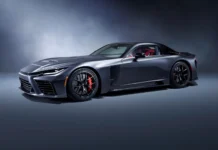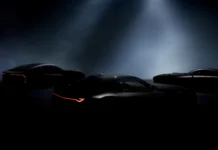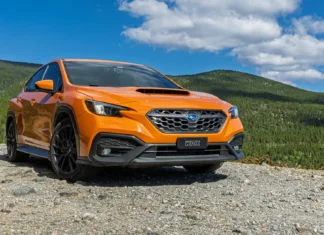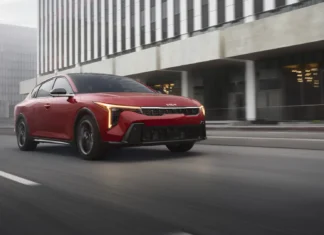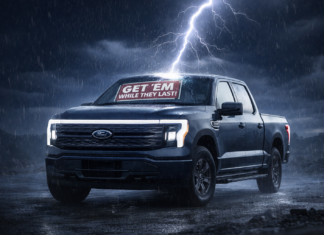
In a marketplace dominated by crossovers, the 2017 Toyota 86 shouldn’t exist. It’s a compromised, loud, rear-wheel-drive, two-door sports car.
The bean counters at Toyota and Subaru, whose BRZ is identical to the 86 and who, in fact, manufacture both cars, must have been either otherwise occupied or perhaps under heavy hypnosis when these cars were proposed. I mean, who takes the time, and money, to develop an all-new, rear-drive sports car with its own chassis and engine and that doesn’t even really fit into either manufacturer’s lineup?
The 86 did have some reason for being, at least in its former guise as the Scion FR-S. Horrible model name notwithstanding, the FR-S did have a purpose at Scion, whose customer base was not quite as young and hip as the marketers who created the brand would have liked. Around the world, the FR-S was already known as the 86, an homage to the legendary Corolla AE86 of the early 1980s that, thanks to an anime and live-action movie called Initial D, became the darling of the drift racing scene. Toyota was hoping the FR-S would draw a more youthful demographic, but alas that was not to be, and Scion is no more.
Styling
The 86’s long-nosed, fastback, coke-bottle styling sets no new standards in sports car design, but it is an overall attractive package thankfully not festooned with extra fiddly bits like bogus “aero kits.” It’s long, low and wide. For its transition from Scion to Toyota, the 86 got a facelift, and it was spared the garish front-end treatment its new stablemate, the Corolla, got for 2017. The lower grille is still a bit overdone, especially the two points on the lower edge that look a little like fangs, but the updates did nothing to detract from what is a fine looking coupe.
On many occasions, fellow motorists and pedestrians took a long look at the 86 as it went by. Perhaps it’s because, in a sea of lookalike crossovers and full-size pickup trucks more often than not painted in some dull shade of gray, the bright red 86 looked like something special.
Inside, the all-business styling continues with an upright dash devoid of any frivolities. The area around the infotainment system is done in Toyota’s fake suede called Granlux with an embossed “Toyota 86” logo nearer the passenger. Granlux also adorns the upper door panels. To Toyota’s credit, most of the interior surfaces that are most likely to come into contact with fingertips are soft touch.

The interior is very black, with only silver accents on the doors, steering wheel and center console. Seats are cloth, but the steering wheel and shift knob are covered in soft leather of a higher quality than usually found in cars in the 86’s price range.
Performance
Under the long hood is a Subaru-designed 2.0-liter flat four that makes 205 horsepower and 156 lb-ft of torque. It’s a high-strung motor, and since horsepower is essentially a product of torque and RPM, the high torque peak of 6,400 RPM is expected for an engine that makes more than 100 horsepower per liter. In a way, it’s similar to the classic Honda engines that had to be wrung to the top of the rev range to make their power, but instead of the sewing-machine smoothness of a Honda inline-four, the 86’s mill has the coarseness expected from a boxer engine.
Because of the relatively low torque number and the high RPM, the 86 could feel gutless to those who gauge speed based mostly on low-end torque. There are calls to turbocharge this engine, but that would be out of character for the 86. It needs the linear torque curve of a naturally aspirated engine. While turbocharging may not be the way to do it, the call for more power, especially torque, is a correct one. A bump in displacement would be a better approach to find the much needed extra torque, as it would keep the linear power curve but feel more lively at lower RPM.

Power goes to the rear wheels through a six-speed manual transmission. Throws are short, accurate and light. It’s one of the best manuals I’ve driven, especially for the price. Those who order an 86 with an automatic transmission just don’t get what the 86 is all about. The fact that an automatic is even offered is blasphemy, a kowtow to a buying public that would rather look like they know how to drive than actually learn how.
Along with the power bump (5 horses and 5 torques), manual transmission 86s for 2017 also get revised, shorter gearing aimed at mitigating some of the low-end torque deficit. While it does make the 86 feel peppy off the line, it takes its toll on the highway, where the little flat-four is spinning at 3,400 RPM at 75 MPH. It makes its presence known, too, as the engine is loud to begin with and there’s not much for sound deadening. Highway trips are a noisy affair in the 86.
For the record, automatic-equipped 86s have the same power and gearing as last year’s FR-S. But no one should be buying an automatic 86 anyway, right?
Ride and Handling
Let there be no doubt about it, the 86 rides like a buckboard. Ride comfort is not part of the 86’s repertoire, but in reality it’s no worse than any other car tuned for handling. It hits potholes hard, shimmies over irregular road surfaces and generally transmits most bumps right to the passengers’ spines. But those who want the 86 to have a better ride quality don’t understand the car’s nature and should probably look elsewhere.
Handling, though, is phenomenal. Suspension settings have been revised for 2017 for better turn-in. The front is a little stiffer, while the rear is a little softer. Steering, too, is one of the better electric systems I’ve driven. It’s accurate, has pleasant heft without being too stiff, and communicates what the front wheels are doing.
The whole car feels lively and willing. This is where the engine and transmission come into play – along with that linear, naturally-aspirated torque curve. All of the pieces work together in harmony and synergy to make the 86 an ideal backroad-carving tool. The traction control can be put into Track mode, where the stability control adds to the car’s handling, or everything can be turned off for tire-smoking fun.
Legend has it that the 86 was purposely shod with Prius-spec tires to allow for easier drifting at lower speeds thanks to the tires’ low grip. This is for the most part true, as the test car, despite having the summer tire option (why it didn’t have the no-cost all-season tires for life in Colorado is a mystery), ran on eco-minded Michelin Primacy HPs at 215-55R17. This, FYI, is the same size of tire that’s on a Honda HR-V. TRD-optioned 86s get 18-inch wheels with stickier Michelin Pilot tires.
The car did slide around a few times, but the traction control took care of bringing the rear end in line. With the traction control off – something I didn’t have a chance to test, as I didn’t have access to a test track – the 86 would most likely slide at will.
Utility
Talking about utility in a two-door sports car may seem a futile exercise, but it must be done. The 86 has 6.9 cubic feet of trunk space, which is pretty small. The back seats fold down to increase luggage space to acceptable levels for two passengers, but they don’t split – it’s all or nothing.
At least the trunk is flat and wide and doesn’t have a lot of odd nooks, plus the trunk lid doesn’t have protruding struts that would take away even more space.
Comfort and Convenience
Like utility, comfort and convenience are not the highest priorities in the 86. The front seats, which are manually controlled and cloth covered, are snug-fitting buckets that provide a decent amount of seat comfort for their limited adjustability. They are a bit narrow, so those wider in girth may not find them as comfortable as thinner folk, but for sports-minded seats they are comfortable enough for a long road trip. The driving position is near-perfect, at least for me, with enough telescoping wheel travel to put the steering wheel at a comfortable distance while still allowing for enough legroom.

The back seats, however, are a joke. They act as a padded parcel shelf most of the time. I’m 5-11, and there’s about three inches of space between the back of the driver’s seat and the rear seat cushion when I adjust the front seat to my size. I actually attempted to sit in the right rear seat, and I was able to get back there with reasonable ease, but when I slid the front seat back to where it would need to be to accommodate my legs and feet, I could barely get into the front. It would be a little bit better if Toyota or Subaru engineers could find a few extra inches of toe room under the front seats, as I couldn’t slide the seat back too far without crushing my toes. I had at least five inches of space between the seat and my knees, so that little bit of toe room would make seating for at least three possible.
That padded parcel shelf does, however, add a little bit of practicality over the 86’s two-seat competition. The back seats, as small as they are, can still fit babies and small children. This is important, as it means a childless couple can keep the 86 for a few years if they suddenly become a party of three – or four – before having to upgrade to something with actual legroom.
The 86 first came out in 2012, which explains a lack of storage for modern-day smartphones. The narrow slit in front of the gear lever fits an old-school-sized iPhone SE with no problems, but the larger 6S doesn’t fit at all. Nor does it fit in the slot in the removable cupholder tray that sits in the center console. On the comfort side, the 86 doesn’t have any kind of padded armrest in the center, retractable or otherwise.
The infotainment system is pure base Toyota and should be familiar to anyone who’s driven a Toyota product in recent years. It seems more stripped down than usual, though. It doesn’t have navigation – that’s a $900 add-on – but it also doesn’t have any kind of trip history information, either. It’s also missing satellite radio.
It has Bluetooth streaming, but it has an odd delay of about 5-6 seconds where the music will first play from the phone before transitioning to the radio. I’ve never experienced that in any other car I’ve driven with streaming capabilities.

Economy
The 86 is rated at 21 MPG city, 28 MPG highway and 24 MPG combined for the manual-equipped model, but for its time with me, the 86 got an impressive 29 MPG. This is in decidedly mixed driving, and with a fair amount of trips to the redline in between. This is an amazing number that, if it can be repeated, makes the 86 a surprisingly good commuter car for one or two people.
Value and Competition
The 86 is only available in one trim level and starts at $26,255. The test car was bone-stock with no options, and with destination topped out at $27,120.
While $27K is a decent price for a sports car, it’s worth it to note all the things that much money doesn’t buy in the 86. For that money, you get:
- No proximity key
- No push-button start
- No leather seating
- No navigation (it’s a $900 extra)
- No power seats
- No sunroof
- No information screen on the gauge cluster
- No blind spot monitor
- No rear cross-traffic alert
- No safety assist of any kind
- No automatic climate control
What you do get is a raw, visceral driving experience that will remind you of why you fell in love with driving in the first place.
There are two big elephants in the room, however. The first is the one that is always there when talking about affordable sports cars, the Mazda MX-5 Miata. It might have only two seats and even less utility than the 86, but it has that wonderful open-air experience that the 86 just can’t match. Plus, it was faster than last year’s FR-S when TFL’s Paul Gerrard took them both around the track.
The second elephant is the 86’s sister car, the Subaru BRZ. Apart from some basic styling differences, different badges and a sightly different suspension tune, it’s the same car, built at the same factory. The entry-level Premium model (an odd name for the base model) is equal to the 86 in terms of features, but is about $1,000 less. Then there’s the up-level Limited model, which comes with a lot of the things on the list of missing stuff, like proximity key, push-button start, leather seats, and dual-zone automatic climate control. And it’s only $1,000 more than the 86.
So unless there’s some aversion to the Subaru badge, frugal buyers looking for a hardtop sports coupe will probably choose the Subaru over the Toyota. The 86 may have some heritage in its name, but heritage and a larger dealer network probably aren’t worth the extra grand.
Summary
 On the TFLcar scale of:
On the TFLcar scale of:
- Buy It,
- Lease It,
- Rent It
- or Forget It,
The 2017 Toyota 86 gets a Buy It!
Despite its flaws, and despite the lack of value over the BRZ, the 86 is some of the most fun you can have for less than $30K. It has telepathic handling, a raw, visceral, snarling engine, good looks and surprising fuel economy. I like the styling a little better than the BRZ, but really, as long as open-air motoring isn’t a priority, you can’t go wrong with either one.
[smartslider3 slider=14]
Check out this related TFLcar video of the 2017 Toyota 86:







